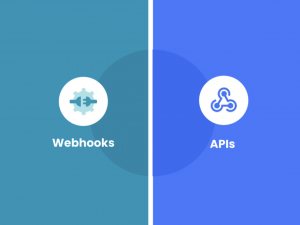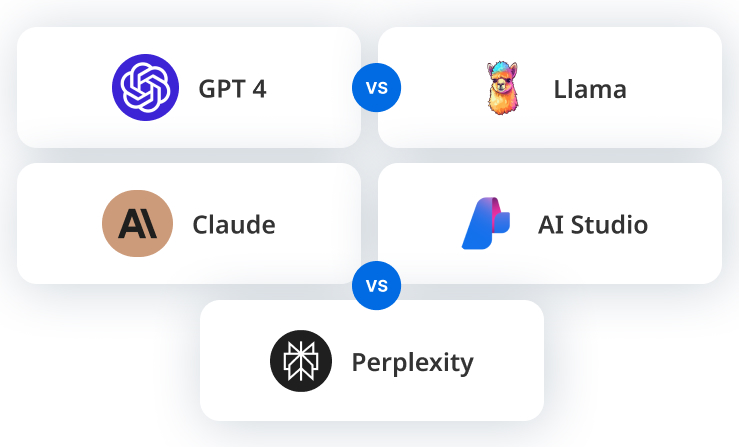In the digital era, where the demand for services is high and customer experience is vital, chatbots in banking can effectively improve service quality.
Nowadays, everyone wants convenience and fast responses to their queries. As a result, more banks are integrating chatbot technology into their digital services.
But how exactly can chatbots be utilized to improve customer experience? Curious to know? This blog will cover it all. So, let’s begin with the market insight.
Table of Contents
Chatbot Adoption: Market Overview
Here are mind-boggling statistics revealing the potential of chatbot adoption across various industries:
- A report by Juniper Research indicates that e-commerce transactions through chatbots will reach $112B by 2023.
- A study by marketsandmarkets shows that the chatbot market size will expand from $2.6B in 2019 to $9.4B in 2024.
- The chatbot market worth is predicted to rise from $17.17B in 2020 to $102.29B by 2026. (Research and Markets)
- The worldwide chatbot market revenue was $83.4 million in 2021, which is predicted to rise to $454.8M by 2027. (Statista)
- The chatbot in BFSI was $586 million in 2019, and it is supposed to touch $6.83 billion by 2030 (Statista).
Now, we have seen that the chatbot market is growing dramatically globally, but why is it gaining so much attention in the banking sector? Here is why.
Top 7 Benefits of Banking Chatbots
Chatbots are a great way to improve the customer experience as they can respond quickly and accurately to questions, freeing up time for human agents who can focus on more complex tasks. Here are seven ways how chatbots can improve the customer experience:
1. 24/7 Availability
What if you could ask a question, get an answer, and provide feedback any time of day or night? Yes, with Chatbots, you can. Chatbots are always available and don’t need to take breaks or vacations, making them the perfect choice for customer service.
With 24/7 availability, customers can get quick and accurate answers to their queries anytime. Suppose a problem emerges for which there isn’t an existing solution. In that case, a solution could be created in real-time and immediately made available through customer service representatives. If the same question is put across again, chatbots will handle that.
2. Personalization
Chatbots can provide personalization in customer service. They can be programmed to recognize customers’ names and preferences and tailor their responses accordingly.
This ensures that customers’ concerns are addressed more meaningfully, which is essential for providing an excellent customer experience. Customers can also opt-in to receive notifications based on their interests or past purchases, allowing them to stay informed about relevant content and offers tailored specifically for them.
3. Automation
Automating manual processes like filing tickets for customer service requests helps companies save time and resources while also providing faster responses to queries. With Chatbots taking care of these tasks, employees are free to focus on other essential functions such as sales strategy development or improving customer satisfaction.
Read Also: Top 10 Amazing Chatbot Benefits for Higher Business Growths
4. Easy Data & Documents Collection and Verification
Good banking services begin with trust, and there’s no faster way to lose that trust than not being able to verify someone’s identity. Verification typically involves a lot of paperwork or copies of documents that take hours to collect and can delay service by days or weeks while banks wait for paperwork to arrive.
With chatbot technology, however, it’s possible to get all necessary information in minutes—or even seconds—with just a few clicks.
Similarly, the integration of regtech in financial services streamlines compliance processes, enhancing the security and efficiency of transactions in a manner akin to how chatbots optimize customer interactions
The resilient verification process is beneficial when verifying customers who have recently moved or changed jobs. Instead of wasting time on hold with customer support, they can ask their bank to send them an email containing all relevant documents attached. The customer then reviews these documents through their mobile device, verifies their authenticity using facial recognition software, and completes a simple form confirming their identity.
With this feature, customers can enjoy your bank’s great products and services immediately. They love being able to do business quickly without having to waste precious time waiting around on hold or going out of their way to visit a branch.
Your customers also appreciate your attention to security since every piece of data they provide is encrypted as soon as it leaves their phone (and stays encrypted until after it reaches yours).
5. Higher Security Levels
Bank chatbots provide improved security levels because they can detect fraud in real-time and alert bank personnel about the suspicious activity before it can become genuinely problematic. Additionally, encrypted communication prevents account information from becoming vulnerable during conversations with customers.
5. 24×7 Assistance
One of the most significant advantages of chatbots in banking is 24×7 assistance. Whether at work in between meetings or shopping on the weekend, your customer’s banking questions can be answered. Irrespective of time they will have access to a support team to assist them with any query.
As new features are added to help improve customer experience, they’ll automatically become available. Suppose a problem emerges for which there isn’t an existing solution. In that case, a solution could be created in real-time and immediately made available through customer service representatives. If the same question is put across again, chatbots will handle that.
6. Instant Notifications
Customers sending texts to bank agents through a chat window to see if they are available can lead to long hold times. And when they do get through, their questions may be misunderstood and confusing.
But new technologies, like chatbots in banking, elevate their experience and help them complete their task faster than ever before. No doubt allowing customers to interact with a bot instead of waiting on hold or sending text messages back and forth expedites the customer service process. Here’s how these customer-friendly tools work:
- A customer uses an app or website to communicate with a programmed bot to understand specific commands.
- The bot answers simple queries and sends relevant information in seconds without having to route calls through an agent.
- If anything more complicated needs human attention, the bot sends a message that alerts bankers about the customer’s query, so they don’t have to wait again.
7. Increased Efficiency
By using automated systems powered by Artificial Intelligence (AI) and Natural Language Processing (NLP), Chatbots reduce the need for human intervention while still providing an efficient response system that streamlines customer service operations and allows companies to respond quickly to inquiries without sacrificing quality or accuracy of information provided to customer queries quickly.
AI and NLP-powered bots can decipher the intent behind customer inquiries and provide accurate answers with minimal effort on the part of the customer or the company. As a result, companies can respond faster to customer complaints without compromising quality. This can lead to improved customer satisfaction and enhanced brand reputation in turn.
How to Integrate Banking Chatbox with Third-Party Systems
There are two main ways to integrate a banking chatbot into your customer service system:
- webhooks
- APIs
Webhooks are triggered by events inside your customer service platform, whereas APIs allow you to build bot capabilities without writing any code. For example, when a new person signs up for your bank’s mobile app, you can send them an SMS message welcoming them.
Alternatively, if you want to add payment functionality into your chatbot so it could help customers make purchases and check their balances, then using an API would suit your needs better.
The best way to start building a chatbot is to pick one function and then expand.
Don’t try and do everything at once; instead, focus on one specific task such as answering simple questions or completing basic transactions like checking account balances or paying bills.
It’s important to remember that a chatbot will only be as good as your customer service software, so make sure you invest in building a great platform before investing in a chatbot. You can contact chatbot services in India to develop a cost-effective and efficient banking chatbot.
The Most Common Ways Users Interact With Bots
The most common methods used to communicate with bots are:
- Text-based Chatbots: This type of interaction is the most popular way users interact with bots. Through a text message, users can ask questions and receive answers from a chatbot in real time. The chatbot uses natural language processing algorithms to understand what the user wants to know and respond accordingly.
- Voice Recognition Bots: With this technology, users can use their voice as an input method for interacting with bots. Voice recognition enables faster communication since users don’t have to type out their queries or commands into a system manually but rather speak them aloud for the bot to recognize and act upon them quickly.
- Visual Recognition Bots: These bots are capable of recognizing objects within images or videos using computer vision techniques such as facial recognition and object detection algorithms. It helps them identify objects in digital media files like photos or videos accurately without human intervention.
- Touchscreen Interfaces: Some robots come equipped with touchscreen interfaces that enable easy navigation through menus. While simultaneously allowing multiple inputs via touching different areas on the screen instead of using physical buttons as controls as traditional keyboards do.
- Natural Language Processing: Natural Language Processing (NLP) is a form of artificial intelligence that enables the bot to understand and respond to natural languages – such as commands in everyday speech. This makes interacting with bots intuitive and user-friendly while allowing them to handle more complex tasks.
5 Tips to Implement Chatbots in Banking for Better Customer Experience
Focus on customer needs: The banking industry is highly competitive and demands the best customer experience. To ensure customers have an enjoyable experience, chatbots should be designed to understand their specific needs and provide appropriate solutions. Bankers must consider the importance of customer feedback when developing bots for banking services.
Leverage AI technology: Chatbots powered by artificial intelligence (AI) can learn from customer interactions and become more efficient over time. It can also automate routine tasks such as answering frequently asked questions, providing account information, or helping customers quickly find relevant financial product options.
Create a user-friendly interface: An ideal chatbot should have a friendly interface that is easy to use and navigate, even for first-time users. The bot’s conversational design should be intuitive enough to understand what customers are saying without manually entering any commands. Additionally, banks must ensure that the UI supports multiple languages if they offer services in various countries or regions worldwide.
Integrate with existing systems: Banks must integrate their chatbot with other systems like CRM or ERP software to ensure seamless operations across all platforms within the organization’s IT infrastructure architecture. This way, the chatbot can access customer data and provide personalized services. Furthermore, it can direct customers from one system to another without them having to switch between different applications or websites.
Measure performance: Last but not least, banks should measure their chatbot’s performance to understand its performance against its desired objectives. This can be done by obtaining customer feedback about their experience using the chatbot and monitoring metrics such as response times and resolution rates for each query received. The insights gained through this evaluation will help banks refine their existing strategies, create new ones, and ultimately deliver better customer experiences with their banking chatbots.
How Can PixelCrayons Help You in Chatbot App Development?
PixelCrayons is a leading software development company that offers services for chatbot app development. Our team of developers has the expertise to create custom-made bots that can be integrated into existing banking systems or developed from scratch based on each client’s specific needs.
With our solutions, banks can automate routine tasks such as account balance checking, loan application processing, financial advice & recommendations, chat support, and more.
We understand how important it is for banks to build trust with their customers through reliable services and user-friendly interfaces – which is why our experienced team ensures every project delivered meets stringent safety standards while providing a seamless experience for your users.
Read Also: The Top 7 Healthcare Chatbot Use Cases You Need to Know
In a Nutshell
All in all, most customers today are millennials who prefer a more tech-savvy banking experience. And that’s what chatbots in banking do – provide personalized, efficient assistance to customers, saving them time and aiding them in reaching their financial goals.
Across industries, many are turning to chatbots, particularly in banking. Since the customer base is more important than ever, banks remain under pressure to provide good customer service. It is time for banks to explore innovative ways to retain their customers.
PixelCrayons has worked with many banks and financial institutions to smoothen the working process. If you’d like to know what you can automate for your business and how you can ensure a delightful customer experience, you can contact our experts.
Frequently Asked Questions
Q1. What kind of questions can customers ask my chatbot?
They can ask your chatbot for anything they’d normally ask a customer service representative. For example, if they want information about their current account balance, they can type, “how much money do I have in my account into your banking app” and receive an instant response from your bot.
Q2. Are chatbots safe for bank account holders?
Yes—chatbots used by reputable financial institutions are encrypted and secure. Suppose someone else manages to access a conversation between an account holder and your bot. In that case, they won’t be able to see anything because all communications are protected by end-to-end encryption.
Q3. Are banking chatbots always free for customers?
Banks and other financial institutions mostly don’t charge their customers for using their chatbots; however, some actions such as transferring money between accounts via SMS may be chargeable.
Q4. Do my bank’s customers need to download any software to use my chatbot?
No! As long as they have internet access, they can chat with your bank’s chatbot from anywhere. They’ll only need to download your bank’s messaging app.








